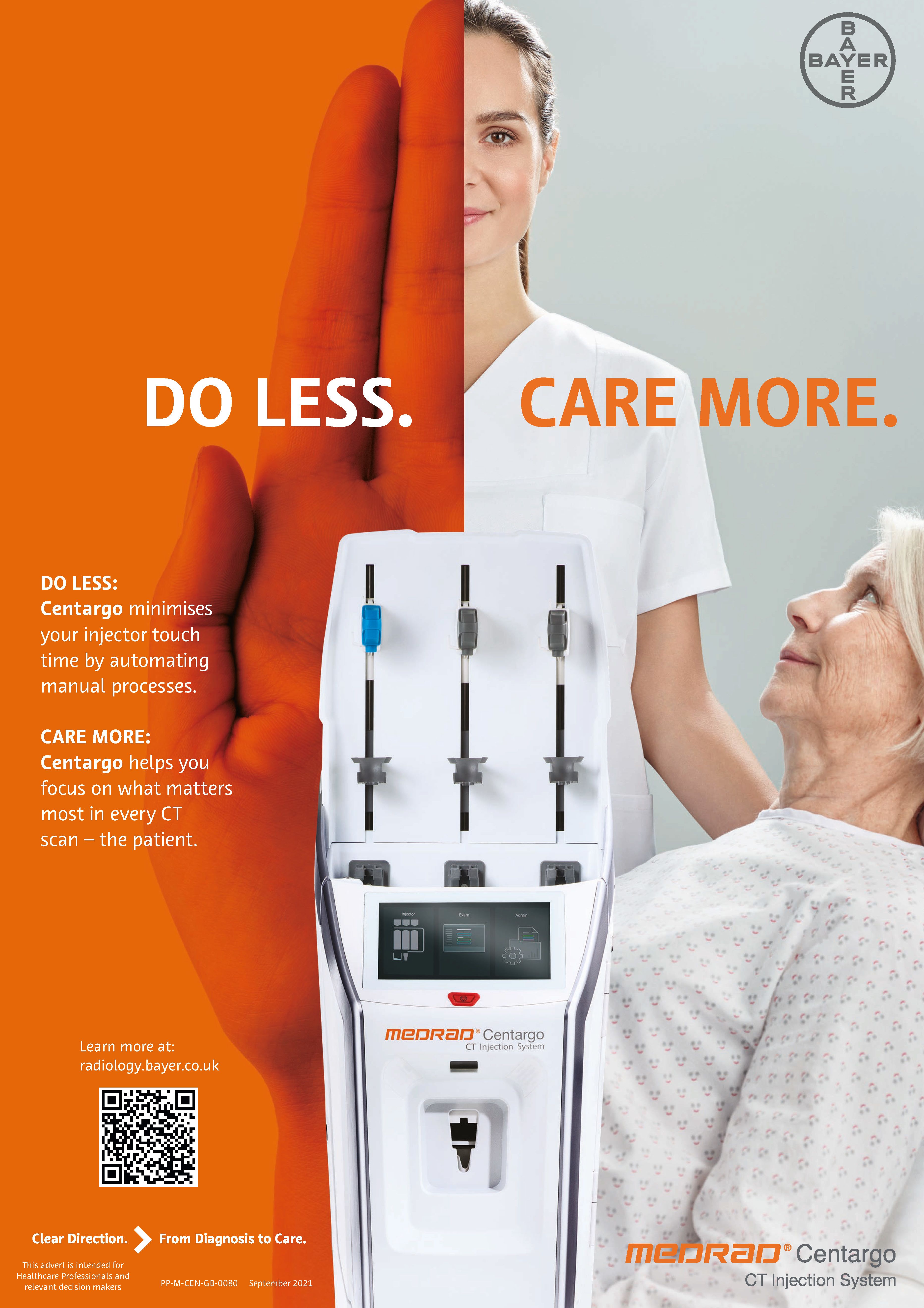Professional
Time to update your standards
What you need to know about the HCPC’s new and updated Standards of Proficiency
Charlotte Beardmore, SoR Executive Director
Charlotte Beardmore, SoR Executive Director
The updated Standards of Proficiency from the Health and Care Professions Council (HCPC) for all Allied Health Professionals (AHPs), including diagnostic and therapeutic radiographers, came into effect on 1 September 2023.
The HCPC led a lengthy public and stakeholder consultation exercise to update the standards, which included professional officers from the Society of Radiographers (SoR). Views from across the membership contributed to meetings with the regulator.
These HCPC updates require active implementation of generic standards such as health promotion, inclusivity and confidentiality, and there are updates to both the existing professions specific standards together with some new profession specific standards.
Starting from September 2023, newly registered individuals are expected to meet the updated Standards of Proficiency (SoPs). However, current registrants will only have to comply with the standards that are relevant to their role.
Radiographers who are already registered should evaluate how these changes impact their current scope of practice and take part in CPD to meet the necessary requirements.
Gap analysis and CPD
Radiographers should do this in consultation with their line or service manager to ensure that any necessary training requirements are identified and supported. The HCPC has developed a gap analysis tool that allows registrants to analyse the gaps between their current practice and their goal. The HCPC states that this can help focus registrants to specific CPD activities or learning activities to meet the updated standards of proficiency.
All Higher Education Institutions (HEIs) that offer pre-registration diagnostic and therapeutic radiography programmes must incorporate the revised SoPs into their curriculum. These standards serve as the minimum requirements for radiographers seeking eligibility for registration with the HCPC. Additionally, HEIs should adhere to the College of Radiographers (CoR) programme approval process to ensure that students are equipped with the skills and knowledge necessary to achieve practitioner-level status within the CoR Education and Career Framework.
This article outlines updates to standards for both generic, all AHPs, and profession-specific requirements for radiographers. Members are encouraged to visit the HCPC website, review the changes, and use the gap analysis tool to evaluate their own continuing professional development needs.
Generic standards
The generic standards have been updated to encourage registrants to implement them actively, emphasising the importance of being autonomous and caring professionals. To achieve this goal, the wording of the standards has been changed to move away from passive understanding and towards active engagement. By using more active language, the HCPC aims to clarify the expectations placed on registrants.
The Standards of Conduct, Performance and Ethics already set out active duties for registrants who identify safety concerns, while the updated SoPs require registrants to demonstrate their application of the standards rather than simply understanding them. The changes are summarised below:
- New standards promoting public health and preventing ill health recognise that registrants are part of a larger healthcare system and play an important role in promoting good health in their professions (standards 15.1-15.4).
- Although the previous standards recognised the role of equality, diversity and inclusion (EDI), the revised standards reinforce this with active promotion across healthcare access and outcomes for all.
- The ability of registrants to provide healthcare to all of their service users is central to the updated standards. Recent changes to the standards of conduct, performance, and ethics have further strengthened the commitment to EDI. They have expanded the role of EDI to ensure that inclusivity is a key factor in all healthcare practices for all service users (section 5).
- The HCPC has improved the central role of the service user – this includes the registrant understanding the importance of valid consent and effective communication in providing good care. Standards on confidentiality have also been strengthened and reference emerging technology implications - see "Further centralising the service user" on the HCPC website.
- The importance of registrants looking after their own mental health and seeking help where necessary as a part of maintaining their fitness to practice is clearly articulated (standards 3.2 and 3.4).
- The need to be able to keep up to date with digital skills and new technologies has now been highlighted as a requirement (standards 6.5, 7.7, 9.3 and 13.1).
- The importance of leadership skills development, which applies to all levels of practice, becomes a requirement (standards 8.6 – 8.9).
Profession-specific standards
Students
Undergraduates (and postgraduate masters students on pre-registration programmes) pursuing a career in diagnostic radiography must now meet the updated requirements that align with profession-specific standards. These changes reflect ever-evolving diagnostic techniques and emphasise the importance of skills in MRI and CT which form part of many standard diagnostic pathways.
By anticipating future needs, these updates ensure that graduates are prepared for the full scope of practice upon registration. Specifically for MRI, the requirement is that graduates can perform standard procedures (13.36). This expands upon the previous requirement for understanding the physical principles of MRI. There is also an increased appreciation of the safety considerations related to MRI.
CT examinations
For CT, the requirement is that registrants can perform a broad range of examinations, including standard head CT examinations, and should be able to assist with CT examinations of the spine, chest and abdomen in acute trauma. A new registrant should be able to contribute effectively to other CT studies (standard 13.35).
The growth in these modalities and the expansion of the equipment base have established these as mainstream imaging examinations, and service requires that graduates have the skills and knowledge to contribute effectively in these modalities, providing a firm foundation on which to build enhanced skills.
Artificial intelligence
Acknowledging the technological developments in radiology, and in addition to the generic standards focused on digital skills and raising digital awareness for all AHPs, there is a specific standard for radiographers relating to artificial intelligence (AI). This standard states that radiographers must ‘demonstrate awareness of the principles of AI and deep learning technology, and its application to practice’ (standard 12.25).
To support this specific standard, the Society and College of Radiographers is organising a series of webinars on AI which are free for members, and the CoR will publish an AI session in the Clinical Imaging elearning programme on the NHS Technology Enhanced Learning platform to support this standard. This will be available later in September 2023.
Therapeutic radiographers
The changes to the requirements for therapeutic radiographers relate to the increased use of imaging in radiotherapy treatment and planning, and more appropriately reflect the complex nature of treatment planning and delivery, now requiring new graduates to perform standard CT and assist in performing MRI planning procedures (13.45), along with a strengthening of the understanding of the safety considerations related to MRI (14.7).
The need to perform multimodality imaging techniques and the image registration process is also now highlighted. While recognising signs and symptoms of disease progression has long been a core skill, the use of treatment imaging information to inform this assessment is now also included.
All radiographers
All radiographers at every level should consider how the new standards impact them, their services and their patients. There is a significant change for all students who will need greater access to cross-sectional imaging, alongside a need to see the generic skills embedding in practice. The new standards should produce a radiographer with the foundations for a long and rewarding career, allowing them to work effectively at the point of qualification and preparing them for a varied future that requires flexibility and adaptability.
Those radiographers already qualified will recognise the challenge of healthcare changes. We are all able to reflect on how practice has evolved since we completed our pre-registration education and training, and offer support to those who are now entering the world of radiography.
Change is important to ensure that as radiography professionals we are equipped with the right knowledge, skills and attributes to support the delivery of high quality care for all; our families, our friends and the communities we serve. The revised HCPC standards, and the CoR Education and Career Framework support this principle.
Find out more…
Charlotte Beardmore is Executive Director of Professional Policy at the Society and College of Radiographers.
Find out more about the updated SoPs at the HCPC website and use the HCPC gap analysis tool to see how you could focus your CPD to align with the new standards.
Now read...




